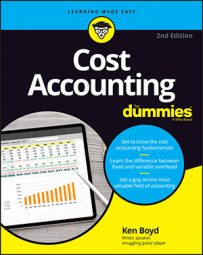When cost accounting, a usage variance occurs when you use more or less of something (material or labor) than you planned. If your budgeted usage is different from your actual usage, you have a variance.
You have some choices about the usage rate (hours) that you use for budgeting cost allocation. For example, you estimate a level of usage in planning a budget. That estimate could be based on a sales and production forecast or based on the same level of production in the prior year. You can use that budgeted level of usage to allocate costs to divisions.
The production capacity level that you choose has an impact on your usage. Are you producing your product 24/7, or do you expect some downtime, due to a lack of orders? It’s important to consider the impact of the usage rate you choose.
Practical capacity generates a low cost per unit. That leads to a lower total cost allocation to each division. Less cost allocated to the division means more costs sitting in the head office — unallocated. The company recognizes all the expense, whether it gets allocated to a division or not. Once the head-office managers decide on a cost allocation method, it should be fixed for the year.
If the head office sets an allocation rate per hour that applies too little cost to each unit, it’s stuck with it. It’s unreasonable for the head office to ask division managers to take on more cost because the head office made a poor cost allocation decision.
If the head office uses budgeted usage for cost allocation, it’s committed to those estimates. If there’s an unfavorable variance (not enough expense allocated), that amount isn’t passed on to the division after the fact. The head office incurs the cost. The divisions are not penalized for the head office’s poor estimate.
Now, it’s possible to use actual usage to allocate costs. It’s a tricky process, however. By definition, none of the actual amounts are known until the end of the period. If you use this method, the division managers won’t know their cost allocation until after the end of the period.
It’s better to manage your business with as much upfront planning as possible. A division manager would have to come up with some cost allocation number to budget at the beginning of the year anyway. But there would be a problem at the back end of the year.
As a division manager, you may need to adjust your cost allocation expense number to match the allocation you get from the head office. This affects your divisional profits and likely your compensation at the end of the year. Therefore, you may conclude that using actual usage for cost allocations can lead to a lot of frustration.

